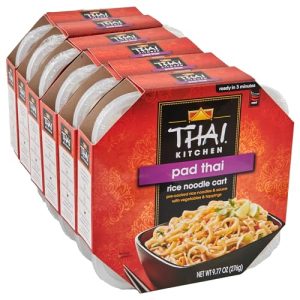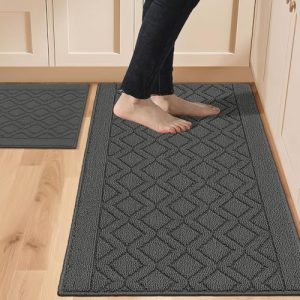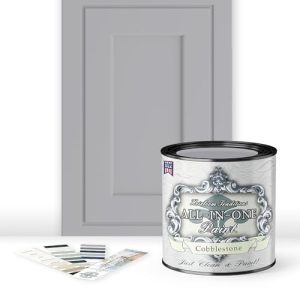Are you planning to install a microwave oven in your kitchen’s upper cabinets but unsure about the right depth? Getting this measurement right is crucial for both style and function.
Too shallow, and your microwave might stick out awkwardly; too deep, and you could lose valuable storage space. You’ll discover exactly how deep upper kitchen cabinets need to be to fit your microwave perfectly. Keep reading to make sure your kitchen looks great and works smoothly every day.
Standard Depth Of Upper Kitchen Cabinets
Understanding the standard depth of upper kitchen cabinets is essential when planning space for your microwave oven. Most homeowners overlook this detail, only to find their appliances don’t fit as expected. Knowing these measurements helps you avoid costly adjustments and keeps your kitchen functional and stylish.
Typical Cabinet Dimensions
Upper kitchen cabinets usually have a depth of 12 inches from front to back. This size allows enough room to store plates, glasses, and spices without sticking out too far into your workspace. For microwaves, this means the cabinet depth often matches or slightly exceeds the depth of the appliance, ensuring a snug fit.
Cabinet heights typically range from 30 to 42 inches, while widths vary widely based on your kitchen layout. The 12-inch depth standard is a good starting point, but you’ll want to measure your microwave’s depth carefully to confirm compatibility. Have you measured your microwave’s depth against your cabinets yet?
Common Variations In Depth
Some upper cabinets come deeper, ranging from 15 to 24 inches, especially if designed to house larger appliances like microwaves. This extra depth provides more storage and a better fit for bulkier items. However, deeper cabinets can reduce counter space and may look bulky if not balanced with your kitchen’s overall design.
Shallower cabinets, around 10 inches deep, are less common but work well in tight spaces or modern kitchens with minimalist styles. They may not fit most microwave ovens but offer an open feel and easy access to frequently used items. Would adjusting your cabinet depth improve your kitchen’s usability or aesthetics?
Ideal Cabinet Depth For Microwaves
Choosing the ideal cabinet depth for a microwave ensures it fits perfectly and functions safely. Upper kitchen cabinets usually have standard depths, but microwaves vary in size. The cabinet must be deep enough to hold the microwave without sticking out or crowding the space.
Microwave Size Considerations
Microwaves come in many sizes and shapes. Compact models need less space, while larger ones require deeper cabinets. Measure the microwave’s depth before selecting or modifying a cabinet.
Keep in mind:
- Microwave depth includes the door handle, which adds extra length.
- Allow space for ventilation openings on the back and sides.
- Standard upper cabinets are about 12 inches deep, but some microwaves need 15 inches or more.
Clearance Requirements
Microwaves need clearance to prevent overheating and allow door movement. Most manufacturers recommend at least 1 to 3 inches of space behind the microwave.
Also consider:
- Space above for proper air circulation.
- Room for the microwave door to open fully without obstruction.
- Clearance below if the cabinet has a built-in vent or lighting.
Customizing Cabinet Depth
Customizing the depth of your upper kitchen cabinets is key when you want to fit a microwave oven seamlessly. Off-the-shelf cabinets often don’t match the specific depth requirements of built-in microwaves, which can lead to awkward gaps or cramped spaces.
Adjusting cabinet depth gives you the freedom to create a clean, integrated look while making sure your microwave fits perfectly and functions safely. Have you ever noticed how a slightly deeper cabinet can transform the whole kitchen’s flow?
Adjusting For Built-in Microwaves
Built-in microwaves usually require cabinets that are deeper than standard upper cabinets, which are typically around 12 inches deep. You might need to increase the depth to 15 or even 18 inches depending on the microwave’s size.
Think about the space behind the microwave too. It needs clearance for ventilation and electrical connections. Customizing the cabinet depth helps you avoid overheating and allows easy access for wiring.
Consider adding a recessed area inside the cabinet to tuck the microwave back without making the whole cabinet deeper. This can preserve your kitchen’s overall balance while still fitting the appliance comfortably.
Balancing Aesthetics And Functionality
Deeper cabinets can sometimes look bulky or out of place. To avoid this, you can match the cabinet depth to other kitchen elements, like countertops or lower cabinets.
Use matching materials and finishes to maintain a cohesive look. You might also add trim or molding to soften the transition between cabinet depths.
Functionality should guide your design choices. Ask yourself: Are you sacrificing too much storage space for a deeper cabinet? Could a microwave shelf or stand-alone unit work better in your kitchen layout?
Custom cabinet depth is about making your kitchen work for you, not against you. What depth adjustment would improve your cooking space the most?
Installation Tips For Upper Cabinets
Installing upper kitchen cabinets for microwave ovens requires careful planning. Proper installation ensures the microwave fits well and works safely. Attention to detail avoids common mistakes and improves kitchen function.
Measuring For Proper Fit
Measure the cabinet depth before installation. Typical upper cabinets range from 12 to 24 inches deep. Microwaves often need at least 15 inches depth for a good fit.
Measure the microwave’s width and height too. Leave space around the microwave for easy use and air flow. Check the wall studs to mount the cabinet securely. Use a level to keep the cabinet straight.
Ensuring Ventilation And Safety
Microwaves need proper ventilation to avoid overheating. Leave gaps around the microwave for air circulation. Follow the manufacturer’s guidelines for clearance space.
Install a vent or exhaust fan if required. Use heat-resistant materials around the microwave area. Secure electrical connections safely and avoid loose wires.
Materials And Design Choices
Choosing the right materials and design for upper kitchen cabinets is crucial. These cabinets need to support the weight of a microwave oven. They also play a role in defining the kitchen’s style. Let’s explore the key considerations in materials and design.
Durability And Weight Support
Materials like plywood and solid wood offer great support. They ensure that the cabinet can bear the microwave’s weight. Particleboard is less durable but more affordable. It’s important to use strong brackets and hinges. They help in providing additional support.
Matching Kitchen Style
Upper cabinets should blend with the kitchen’s overall look. Choose materials and finishes that complement existing decor. Glass-front cabinets add an elegant touch. For a modern look, consider sleek, handleless designs. Traditional kitchens often favor detailed woodwork.
Common Mistakes To Avoid
Choosing the right depth for your upper kitchen cabinets to fit a microwave oven might seem straightforward, but many homeowners stumble over common mistakes that can cause frustration later. These errors can lead to poor appliance fit, reduced functionality, and even safety concerns. Knowing what to avoid helps you plan smarter and ensures your kitchen works well for you.
Insufficient Depth Issues
One major mistake is selecting cabinets that are too shallow for your microwave. If the cabinet depth is less than the microwave’s size, the appliance will protrude awkwardly, making your kitchen look cluttered and reducing counter space.
Imagine buying a microwave that’s 15 inches deep but installing it in a cabinet only 12 inches deep. The result? The microwave sticks out, increasing the risk of knocking into it and making it harder to open the door fully.
Always measure your microwave’s depth, including the handle, and choose cabinets that provide at least an inch or two extra space. This extra room allows for ventilation and easier access.
Ignoring Manufacturer Guidelines
Microwave manufacturers provide specific installation dimensions and clearance requirements. Overlooking these guidelines can lead to overheating or void your warranty.
For instance, some microwaves need a minimum space behind and above for proper airflow. Ignoring these details might cause the microwave to overheat, reducing its lifespan or creating safety hazards.
Have you checked your microwave’s manual for recommended cabinet dimensions? Following these instructions ensures your microwave fits properly and operates safely.
Frequently Asked Questions
What Is The Standard Depth For Upper Kitchen Cabinets?
The standard depth for upper kitchen cabinets is typically 12 inches. This size fits most microwave ovens and allows enough space for other kitchen items. It also ensures the cabinet doesn’t protrude too much, maintaining a balanced kitchen look.
How Deep Should Cabinets Be For Over-the-range Microwaves?
Cabinets for over-the-range microwaves are usually 12 to 15 inches deep. This depth accommodates the microwave’s size and ventilation needs. It also provides enough clearance above the stove for safe and convenient cooking.
Can Upper Cabinet Depth Affect Microwave Installation?
Yes, cabinet depth affects microwave installation. If the cabinet is too shallow, the microwave may stick out. Too deep, and it can cause awkward spacing. Proper depth ensures the microwave fits securely and functions efficiently.
Are Deeper Cabinets Better For Storing Kitchen Appliances?
Deeper cabinets, around 15 inches, offer more storage space for appliances. However, they might make items harder to reach. Choosing the right depth balances storage needs with kitchen accessibility and aesthetics.
Conclusion
Upper kitchen cabinets for microwaves usually range from 12 to 24 inches deep. Choosing the right depth helps fit your microwave perfectly. It also keeps your kitchen looking neat and organized. Think about the size of your microwave before buying cabinets.
Proper cabinet depth makes cooking easier and safer. Keep these points in mind for a smooth kitchen setup. This small detail can improve your kitchen’s look and function a lot.

Sophie Hartwell is the founder of KitchenQuik.com, where she shares kitchen tips, smart cooking hacks, and the best product picks to make everyday cooking easier and more enjoyable.




